Board Meetings | The Worst Bouldering Tactic
In this Board Meeting, rather than make a list, Nate and I discuss our individual top picks for the most common, most egregious, absolute worst tactic we see boulderers using. If you're making this mistake, consider actively exploring something different in your next session.
The Power Company Podcast is a proud founding member of the Plug Tone Audio Collective.
We don't tweet. We scream like eagles.
You can find the podcast anywhere you get your pods. Subcribe, leave us a review and share it with your friends.
FULL EPISODE TRANSCRIPT:
Kris Hampton 00:37
What's up everybody, I'm your host, Kris Hampton.
Nate Drolet 00:40
And this is Nate Drolet.
Kris Hampton 00:41
And together we form Drake and Mike Zombie.
Nate Drolet 00:46
Ooh. I don't know Mike Zombie.
Kris Hampton 00:49
Mike Zombie was the producer of "Started From The Bottom Now We're Here."
Nate Drolet 00:55
Oh, wow, that really......
Kris Hampton 00:56
Hahaha
Nate Drolet 00:57
The second you said "producer", I was like, "Logically this should have been a good guess". And then you, with the title tracking...yeah. Oh, yeah. I see what you did there.
Kris Hampton 01:06
Yeah. And that was the duo I use today because we are talking about the top bouldering tactics mistakes that we see being made. And we're not making a big list here. We've talked about tactics quite a bit on this podcast, of all sorts. Tactics that are a positive to use, tactical mistakes, we've talked about them a lot. But these are the single biggest mistakes that the two of us see, our top. And just a riddle for you. Does, does it frustrate you when you see this happening in real life, when it's not your clients, when it's just people at the crag? People you're talking to at the gym, whatever it is, when they when they egregiously perform the top tactical mistake that you see, do you get frustrated or do you just brush it off?
Nate Drolet 02:14
Depends. Like as a.... I feel like since becoming a coach, I'm more hesitant towards giving people advice.
Kris Hampton 02:26
Yeah
Nate Drolet 02:26
Like anytime someone asks me for advice, man, I'll... I'm here. I'm here for it.
Kris Hampton 02:31
Yeah. But it doesn't stop me from getting frustrated though.
Nate Drolet 02:35
It does not stop me from getting frustrated. If anything it is worse because I can't be like, "Hey, you're being an idiot right now."
Kris Hampton 02:41
Yeah
Nate Drolet 02:41
Like, you're my friend. I love you and that's why I'm telling you this. And there's some people I can say that to, but yeah, if it's, you know, if it's just like a mutual acquaintance, that I'm not gonna, I'm not gonna say anything because it's their, you know, their journey, their path.
Kris Hampton 02:56
Yeah, same.
Nate Drolet 02:57
It's not my place to point these things out.
Kris Hampton 03:00
Yeah. And I think making these mistakes is valuable. And we'll talk about some of those reasons, you know why these mistakes can be valuable. But but I still get frustrated as hell. Like, I get in the car. And I'm like, "What, what on earth? You know, has that person never listened to one of our tactics podcasts?"
Nate Drolet 03:25
Haha. Exactly. That's my exact thought. Yeah.
Kris Hampton 03:27
Haha. Well, this is the first official Board Meeting in person in a year.
Nate Drolet 03:35
Yeah.
Kris Hampton 03:36
So I'm psyched for that.
Nate Drolet 03:38
Same
Kris Hampton 03:38
I think, I feel like we've got the the remote Board Meetings pretty dialed in, but it's still a different thing while we're sitting here in person.
Nate Drolet 03:47
Yeah. Yeah. It's a lot of fun.
Kris Hampton 03:49
Yeah. I'm glad you're here. Maybe we just jump into this thing. And first, before we do jump in, let me say a lot of you are making huge errors all the time. Me too. You know, we all are.
Nate Drolet 04:04
Yeah. Me too.
Kris Hampton 04:07
But these are ones that Nate and I both think are major ones that we see. And we're not pointing these out so that you can go point it out at the crag constantly. You know, that's that's not the point here. But my guess is you're going to fall into both of these traps, no matter how hard you try not to. You know, I can think of times recently when I've fallen into both of these, no matter how frustrating they are for me to see.
Nate Drolet 04:36
Same.
Kris Hampton 04:37
So apply this to yourself, not to the people at the crag. Unless unless they're your friends. Then tell them all you want.
Nate Drolet 04:46
Yeah.
Kris Hampton 04:47
My number one, it's a little bit of a pet peeve even, it's gotten so bad. My number one bad tactic I see with boulders is starting from the bottom every attempt. Hence, the duo.
Nate Drolet 05:05
Yeah.
Kris Hampton 05:08
It's, I would like to say it's it's a newer climber mistake, but not necessarily. It may not even be starting from the bottom every attempt. It might just be starting from the bottom way too often when you don't know the things that are going to happen later in the boulder, and you're always climbing into some position where you're still onsighting, or you haven't explored what might be the problem areas of the boulder. And there are a lot of reasons for that, but every level climber I see doing this. Sitting down, starting from the start, thinking, "I'm just going to send it now". 42 attempts in a row.
Nate Drolet 05:58
Yes. For six straight days.
Kris Hampton 06:01
Yeah. And this is indoors and outdoors. And I think there are ways around this, but why do you think people are so insistent on starting from the bottom every single time?
Nate Drolet 06:15
Well Kris, if I get lucky and do the move, I want to do it from the ground. I need to just send this thing.
Kris Hampton 06:19
Haha. It's, it's also funny to me, because it's arbitrary, right? Like it, the boulder could start anywhere. Somebody just made up, "Oh, we're gonna start here and we're gonna finish here" and now we all are beholden to sitting down and starting on this hold for every single attempt, which makes no sense to me. I feel like it's fun actually, to start from different positions and do different links and, you know, different overlaps, and then to be able to execute the boulder in a, in a way that feels good.
Nate Drolet 06:56
Yeah, I think you learn more from it that way, too. You know, I think some other reasons why this happens is maybe they just don't recognize that they're nowhere near doing having it.
Kris Hampton 07:09
Yeah
Nate Drolet 07:10
I think that I think that's a common issue with newer climbers, is they don't recognize how large the process can be and how new to the process they are with that climb. They're like, "Man, oh, you know, I just got to do it once and I do it."
Kris Hampton 07:27
Mm hmm.
Nate Drolet 07:28
And I think with more experienced climbers, it can be, you know, honestly, like one like, one thing I think that can happen is not worn wanting to work out the rest because maybe it's like a little intimidating to try bigger links.
Kris Hampton 07:46
Yeah, both of those things, I think are two of the major reasons. A lot of people think it's just going to be faster, like, "I'll just get it done and I can move on to something else". And oftentimes, it ends up not being faster. And I think this can get tricky, because there are times when maybe you just needed to try harder and you can do that next move.
Nate Drolet 08:13
Yeah
Kris Hampton 08:13
You know, you sit down, you start, you've got the kind of momentum from starting at the bottom, you're in send position, you try really hard on the one move, you do it, you go to the top. But as boulders get harder for you, whatever your grade is, there are more difficult moves in a row and it's much harder to get lucky or just have "I tried a little bit harder, so I did the move", be the reason that you're still on the wall. When there's lots of hard moves in a row, you know, there's almost always needs to be some level of practice that happens there for you to connect all these difficult positions together. So it's it can seem faster than doing all this extra work, but I've heard so many people say, "I don't need to do that link. I don't need to do that overlap. I don't need to work the top out".
Nate Drolet 09:14
Yeah.
Kris Hampton 09:15
And then fall there over and over and over and over and over for days weeks. Which, you know, is unquestionably slower.
Nate Drolet 09:26
Yeah. You know what I think? I think another reason why this might happen is people haven't had a... they haven't been burned enough. Like.... and they haven't been burned enough and they haven't seen that there's another way. Like, I mean, because I'll see people not not even look at the top out of a boulder and they're like, "Oh, I really want to try and flash this boulder." And if I say that, I'm getting on another boulder, I'm climbing up trees near it, I'm stacking pads, like I'm doing everything.
Kris Hampton 09:54
Yeah
Nate Drolet 09:54
Checking every box. And man, I'll see people like blow the flash of a hard boulder on a top out because they were like, "Oh, I didn't know where to go up there"
Kris Hampton 10:04
Right
Nate Drolet 10:04
It's like, "Hey, there's a sidewalk of a ramp on the back of this. You literally could have just walked up, would have taken you two minutes."
Nate Drolet 10:12
Yeah
Nate Drolet 10:12
Like this sucks. You need to remember this from now on, like every time you want to go try and flash a boulder. So yeah, I think some people may have just not experienced it enough and may have just not been surrounded by other people with good tactics. There's a lot of choss tactics out there.
Kris Hampton 10:29
Yeah, and we've seen this happen with extremely experienced climbers or extremely strong climbers, you know. There was a video of somebody...
Nate Drolet 10:39
Oh Liam
Kris Hampton 10:40
I think that's right.
Nate Drolet 10:41
Yeah.
Kris Hampton 10:42
Is it Sleepwalker or Squoze? One of those
Nate Drolet 10:44
Squoze. V14/15. Yeah, and he had tried it for a couple sessions. Has the same top out as Sleepwalker. This is.... for anyone who wants to see the greatest punt of all time.
Kris Hampton 10:56
Hahaha
Nate Drolet 10:57
It's amazing. He has a video of it. It's his Las Vegas trip. And he was out there, tried it for a couple days, gets up and the top out is like V2. And my new V14/15. He goes up...and maybe what makes video the best is the fact that he's narrating the whole time. Like he...it's him climbing, but then he has a voiceover narration that lets you know just how awful the train wreck you're watching is.
Nate Drolet 11:24
Haha
Nate Drolet 11:24
Yeah, Liam A-B...Abersforth-Bancroft maybe? But yeah, gets up gets up to the V2 section that is a huge jug and he had always just dropped off because he had watched people do it. You just put a foot up, you rock up to a jug and you're done. V0 slab to the top. And he sits there for like two minutes and slowly panic creeps in.
Kris Hampton 11:50
Hahaha.
Nate Drolet 11:50
Oh my god, I think he says something like, "This is a tragedy", like as he as he's actively hanging on, and pumping out and pumping off of this thing and he just drops.
Kris Hampton 11:59
Hahaha. Oh no.
Nate Drolet 12:00
Like, he tries the move a few times. And you know what's even better is I think he stuck around for like, another month to try and send it and never did.
Kris Hampton 12:07
Never did it?
Nate Drolet 12:08
No.
Nate Drolet 12:09
Oh!
Nate Drolet 12:10
Still a project.
Kris Hampton 12:11
Liam, that just broke my heart.
Nate Drolet 12:13
Yeah, it's tragic. Hahaha.
Kris Hampton 12:17
Oh...Liam, thank you for the humor in in your video and in that moment, and it breaks my heart that you did not do that thing.
Nate Drolet 12:24
Yeah.
Kris Hampton 12:26
But it's not... it's...that just goes to show it is not specific to new climbers or inexperienced climbers or climbers climbing below whatever level, you know. We can all fuck up these tactics.
Nate Drolet 12:44
Yeah.
Kris Hampton 12:45
And you have to you have to pay attention to them or accept the the consequences when when it doesn't go in your favor, you know, and you don't get lucky.
Nate Drolet 12:59
Yeah
Kris Hampton 13:00
It's a it's a totally real thing. And I, I think that it can actually be a really good thing for people, like you said, if they haven't been burned enough, because I think it can be good for people to, to do this to start from the bottom too often. Because you do.... let me qualify that.... as long as you do it with some level of awareness, it can be good for you, because you do start to better understand the places where you're going to have trouble.
Nate Drolet 13:32
Yes.
Kris Hampton 13:33
And then down the road, you can shift that tactical approach into "I tried these moves. I recognize because I've done this a lot, that these moves might cause me trouble from the start, so I'm going to wire these right now." And then if you know you eventually get to this place where you're not getting surprised nearly as often by what seems difficult, or how some how difficult something seems, when you start from the bottom.
Nate Drolet 14:00
Yes. Yeah, I, I do think starting from the bottom can be a really good tool for highlighting how a sequence is going to feel.
Kris Hampton 14:09
Yeah
Nate Drolet 14:10
It's kind of, it's your way of going in double checking, "Hey, how's how's everything going?". You know, if you think your sequence for move two through five is awesome, but then you pull on from the start, and it just falls apart by move five, you know, it's like, "Oh, well, maybe I could fix this." So you can then return back to the four to five, move four to five sequencing, figure that out and then you're like, "Okay, I have that dialed, I think I know the rest decently. Let's go back, try it from the start one more time. Run through just to double check." And then you're like, "Okay, I'm getting to move six now. Cool."
Nate Drolet 14:46
Let's keep refreshing. And so I don't think starting from the beginning is it's not a bad thing. It's like what you said. it's, you know, there's use to it.
Kris Hampton 14:46
Yeah
Kris Hampton 14:55
Yeah. And there's also a distinct difference between "Move six got harder for me when I started from the bottom, just because all the moves are hard in a row", and "There's a missing link somewhere in there or missing piece in my sequence that I didn't realize I didn't have"
Nate Drolet 15:19
Yeah
Kris Hampton 15:19
And by starting at the bottom more often, you do start to become more aware of those things, so so it is a learned a learned thing, you know. By the time you're climbing V5, V6, you should be maybe steering away from starting at the bottom as often. And I think one surefire way to know you fallen into this trap is if you're barely making any progress on a bunch of attempts in a row, you know, or if you're, if you think, "It's not the end of the session, and I'm, you know, declining, for some reason", it's a really good idea to go check out the rest.
Nate Drolet 16:12
Yeah. Yeah, I mean, that's a great time to go check out the rest.
Kris Hampton 16:17
I think something you said earlier I'd like to touch on a little more, before we move on to yours and that's if you know, the the top out or the rest of the boulder might be intimidating. That's a real thing. You know, we we can very much walk up to a thing, want to climb it, be excited to climb it, but also be intimidated by it.
Nate Drolet 16:39
Yes
Kris Hampton 16:41
Absolutely a thing that happens all the time. And if you're really honest with yourself, you know that you're avoiding something and you know why you're avoiding it, you know. And more times than not, I've, when I've caught myself avoiding something, especially if it's the top out or a link I don't want to make because I'm like, "Oh, that that link is gonna take a lot of energy and it's gonna be hard", I don't want to fail on the link because that means I'm farther away from this problem than I thought I was. You know, more often than not, when I've done that, I've either been surprised at how much easier it was than I thought it was going to be or by how much less scary it was, or it usually works out in my favor. You know, once I do the link, I send the boulder faster. It's always that link you're afraid of that actually means the most and we end up avoiding most often.
Nate Drolet 17:44
Yeah, yeah, a lot of times checking that box is what lets you mentally switch over to "Oh, I can do this now."
Kris Hampton 17:51
Yeah.
Nate Drolet 17:53
One other thing I'd add to this, as far as starting at the bottom every time is mentally starting at the bottom. Like I see this all the time with people, they will focus on the....they will look up and they say "Okay, like opening moves, crux move, cool, whatever, whatever, whatever, whatever" and they'll climb through to the top. And but they don't set themselves up for success. Like I see this in the gym more often than outside, but they won't even look at the top, because they just in their mind, they're like, "Oh, well, you know, there's a hard section here and I'll need to figure that out" and so they just plan on kind of getting to it as they get to it.
Kris Hampton 18:32
Right.
Nate Drolet 18:32
And which I mean, you know, if you think it's gonna be really hard, like, trying the crux early is cool and that's important, but at least have an idea for what you're doing beyond that.
Kris Hampton 18:42
Yeah.
Nate Drolet 18:43
Like, you know, especially if you get through the crux, like you had to put to put out a lot of energy and if you fell in like, you know, the gimme climbing, because you just didn't look up...um that's a that's a waste of energy.
Kris Hampton 18:56
Yeah, you may not get through the crux again.
Nate Drolet 18:58
Yeah, it might take you another session.
Kris Hampton 19:00
Yeah, that's a real thing. And again, I think it's an important thing to, to make these mistakes and work through them and just do it in a really aware way so that you can better understand. Like I can look at this crux and know it's going to take this amount of energy out of me or I can try the moves once and think, "Oh, this is going to sap me, so these V4 moves to the top out are going to feel much different when I'm in this position", you know, so I think it's important to make the mistakes so that you can become more and more aware as you become a more experienced climber. You'll send more boulders with good tactics then you will with improved strength.
Nate Drolet 19:52
Yes
Kris Hampton 19:53
Most of us will anyway.
Nate Drolet 19:55
Yeah, tactics are huge.
Kris Hampton 19:56
I'd also say one last thing on this is that....and this applies mostly to outdoor boulders...if you haven't tried the top of something at all, if you've been afraid of the top out, and you haven't tried it, you climb through the crux, you get to the top out. Oftentimes, unless there's a big crew of people with a bunch of pads, there's some shuffling of pads that has to happen on a boulder and spotters have to spot differently for top outs, you know, than they do for the low crux moves.
Nate Drolet 20:30
Yeah.
Kris Hampton 20:30
And it's to your benefit to have tried that and have shuffled pads with your spotter, you know,
Nate Drolet 20:39
To know where to spot
Kris Hampton 20:40
Exactly, and be able to say, "This is where I want my pads.This is where I want my spotter.", you know, "When I get to this move, I'm solid, that's when you shuffle the pads over to here."
Nate Drolet 20:50
Yep.
Kris Hampton 20:50
And then I can top out and feel confident that if I fall, I'm safe. And if you haven't practice that you just don't know. Then it's all on the fly and you're hoping that you're safe up there while you're encountering something that was intimidating you to begin with. So better to push through that, get it out of the way and and send the boulder faster.
Nate Drolet 21:14
Yeah. Last thing for me on this is.... I think this is the second time I've said that already.
Kris Hampton 21:19
Haha
Nate Drolet 21:20
But this especially works well if you're climbing outside, because typically you don't go to as many boulder problems. But if you're... let's say you've been working the crux and you're like, "Okay, I'm too tired to work the crux". Start using the rest....like you can use the rest of a boulder or specific moves or sequences as part of your warmup or your cooldown.
Kris Hampton 21:42
Yeah, totally.
Nate Drolet 21:43
A classic example of this for me was Biggie Shorty at Little Rock City. V10. Opening move for me was the crux and from after the opening move, it's maybe like V8 to the top. But you do, you know, let's say four moves in t's like V6 to the top. So what I would do is I'd go warm up elsewhere, come back, do the V6 high stand, do the V8, you know from one move in and then I would start trying opening move. When I was done, I would do the V8 like another two, three times and then I'd do the V6 another like couple times.
Kris Hampton 22:18
Yeah
Nate Drolet 22:19
Just so that I had it wired. The very first time I ever stuck that first move, I took it to the top.
Kris Hampton 22:23
Yeah.
Nate Drolet 22:24
And that's like, yeah and also for me, that made sense because there's a traverse that comes in from another side that adds a few grades and I was like, "Well, anything I learned here, it's going to pay forward on that one, too." But that's, I mean, that's something you can do for pretty much any climb you do.
Kris Hampton 22:41
Yeah, absolutely.
Nate Drolet 22:42
Yeah. Do the top out as part of your warm up. When you're done, rehearse the top a couple times. You know, Full Service in Hueco is a good example of this for me too. Stand is maybe V5. I found it very intimidating.
Kris Hampton 22:56
Mm hmm.
Nate Drolet 22:56
So, you know, every day I would go to work it, step one, get the pads out. Step two, lean across the boulder, pull onto the high start and top it out. And yeah, every time I'd be like, "Oooh, that's still nerve-racking". I'd try the boulder, you know, project it. At the end, I'd run the top out two more times.
Kris Hampton 23:15
Yeah. Especially if it's something that scares you or intimidate you. I think that's a great tactic. If it if it works on that boulder that you can skip the crux and just do the top out to get your brain ready for it to get your fear response ready for it, I think it's a super smart way to do it. It's the way I do it in my Fear Of The Antelope video that I put out not long ago.
Nate Drolet 23:37
Yeah
Kris Hampton 23:38
That top scared me. Scared me to death.
Nate Drolet 23:41
Understandable.
Kris Hampton 23:42
But that's how I would warm up anyway. Because I know to send the boulder I have to do the top and I'm going to have to do it more tired. So if I can't get comfortable doing it, if I can't push myself through it easily when I'm fresh, how am I going to do it when I'm fatigued and coming from the bottom crux?
Nate Drolet 24:01
Yeah.
Kris Hampton 24:02
Yeah, totally. So I will try and link to that if I remember to... that Liam video on his Instagram and again, thanks, Liam.
Nate Drolet 24:14
And sorry.
Kris Hampton 24:15
Haha. Thanks and sorry. Yeah. What's what's your biggest pet peeve of tactics, the biggest mistake you see often made bouldering?
Nate Drolet 24:26
The biggest one I see is not going back to problems or not going back with intention. So not going back is just simply you know, you tried this boulder and it went pretty well. And if this is inside, you know, I have used the phrase that we live in an age of "fast food bouldering" and I still strongly believe that.
Kris Hampton 24:48
We do for sure.
Nate Drolet 24:49
There are so many good climbs in the gym, and they turn over so quickly and it is so fun to do all of them. And yeah you can't like, unless you just an absolute monster, you can't keep up with setting. So what happens is most times people will go in, they'll try something and if they don't send it that session, maybe they come back a second session. But the second a new set comes up, that's it. Like, they may go one day back to another boulder, but, you know, they end up leaving behind all of these things where it was like, man, those are some good opportunities they had. But you see this outside too. Like, people go out and they'll try something, maybe do decently. But then the next time they go out, you know, their friends want to go to a different problem or a different sector, and they don't speak up for themselves and when they do end up coming back to a problem, it's not because they plan to. They just happen to be in the area. So maybe they didn't warm up well, maybe they're just mentally not there or they didn't talk with their friends and say, "Hey, like, you know, I'll go spot you for the first half of the day. I want two hours on my problem and that's going to be awesome for me."
Kris Hampton 26:00
Yeah, I think that's big. And, and I don't think it only applies to like, people who go once or twice and never go back. I think it applies to anybody who, like finds their comfort spot in working on something. You know, might be four or five sessions, but then they get to a certain place that they're they've not practiced pushing through and then they just move on to another boulder.
Nate Drolet 26:29
Mmm hmm
Kris Hampton 26:30
I see that pretty regularly. They just decide. LIke, like, there has been this flag that was raised and you know, said, "Oh, this is the point. You can't do this boulder if you haven't done it by now."
Nate Drolet 26:44
Yeah.
Kris Hampton 26:46
And I I've worked on boulders for a lot of days and I can very confidently say you have not learned everything about that boulder and there's more to learn. There's more things you can change to make it better. Four or five sessions, six session, seven sessions, maybe even a year of sessions is not enough.
Nate Drolet 27:09
Hahaha
Kris Hampton 27:10
Depending on what you're willing to push through.
Nate Drolet 27:13
I'm not willing to push through that.
Kris Hampton 27:15
Hahaha
Nate Drolet 27:15
I'll give you four. I need some overlapping links by four.
Kris Hampton 27:21
Well, yeah. I want some overlapping links, too. But they might just be overlapping links on the first half. Haha, so
Nate Drolet 27:29
Overlapping foothold foot move links.
Kris Hampton 27:31
Exactly. On some boulders, that's a lot.
Nate Drolet 27:34
No kidding. Yeah, I mean, that's, that's a good point. People don't come back after their comfort zone too.
Kris Hampton 27:41
Yeah
Nate Drolet 27:42
Man, I was guilty of this in the South. More than anything, there was just so many good...like, this was when I was climbing in, you know, like a V9, V10 range and so are all my friends.
Kris Hampton 27:55
Yeah.
Nate Drolet 27:55
And there's so many good ones. Man, you know, someone would be like, "Hey, we're going out to this." I'm like, "Let's go!" You know, we go out and we session all day. I may fall off the last move. Next day, they're like, "Oh, we're going down to Alabama to go climb on that." I'm like, "Cool. I'm in. Let's go". You know, end of the season comes along and I'm like, "Man, I fell off the last move of 20 boulders".
Kris Hampton 28:15
Right
Nate Drolet 28:16
I did five. And that, for me, it was a lot of times, like, I just loved climbing with a psyched crew and so I went along with it. But, you know, I should have just spoken up and been like, "Hey, like, let's go back to this thing."
Kris Hampton 28:28
Exactly.
Nate Drolet 28:28
Everyone would have been just as psyched.
Kris Hampton 28:30
Yeah.
Nate Drolet 28:31
But that was, you know, and maybe there was something there with me....like, it's also a lot of fun to figure out new moves. Like, it's fun to go try new problems, where you have a lot of success....or like success in the short term. So it could have been one of those things where I, you know, maybe I was subconsciously not going back for fear of, "Oh, what if I give it two or three sessions and everyone comes to my boulder and I don't send it?"
Kris Hampton 28:59
Yeah, I think that's really important to talk a little more about. Many of us boulder because it's a social thing. It's really fun. The psyched crew, you're all working on the same boulder. But inevitably, somebody is the last to send it, you know and oftentimes, depending on a group's dynamics, it can be the same person, you know, who follows around, learns a lot on the boulder, but is the last one to send it and then the group moves on to another boulder or that, you know, they don't send and the group moves on to another boulder. I think that person has to take responsibility for that. It's really easy to blame the group, you know, but you have to communicate with your group, you know, communicate with your partners, and let them know. "This boulder is important to me", you know?
Nate Drolet 29:58
Yeah
Kris Hampton 29:58
"I want to do this boulder. I'm, I feel like I could do it." Even if it's just "I want to go back for, you know, 45 minutes or an hour of the session the next time that we're out, I want to go back and spend some time on this boulder". And more often than not, your partners or crew are going to be psyched to do it.
Nate Drolet 30:18
Yeah.
Kris Hampton 30:19
And it's just never gonna work out that you're all climbing on the same things and sending at the same rate all the time.
Nate Drolet 30:26
Yeah
Kris Hampton 30:26
Better now to learn how to split up your days amongst a bunch of different boulders, people og different abilities. It just makes it a much more fun session when you can do that. So I think it's important for you, if you're that person, to take that responsibility and start having those talks with your partners. If you're the person who sends quick, see if one partner is getting left behind and make sure you're helping them spend some time on these things, too. It can be a tough place to be, I think.
Nate Drolet 31:02
Yeah. And I, you know, I think the reverse can happen too, in that I've had clients who they were the strong person in their group, maybe by like three V grades. So they feel, they're like, "Oh, I'm going out in a group of eight people." Strike number one.
Kris Hampton 31:18
Yeah. Hahaha. Yes.
Nate Drolet 31:20
We've said this before, I'm gonna say it again. Get rid of your friends, they're holding you back. But they'll go out in a group of eight people and you know, let's say everyone's climbing V5, V6.
Kris Hampton 31:31
Right.
Nate Drolet 31:31
And a couple of things might happen. They might hang out, and like support everyone. Maybe they're running laps on these things, because they're there anyways and they want to go project their V10. When they get to the V10, one of two things happens. One, they're already tired because they've been climbing on all the other stuff. But what mostly ends up happening is they're like, "Well, you know, I'm only one person. The other seven people can't climb right now."
Kris Hampton 31:59
Right
Nate Drolet 31:59
"And I feel bad. Oh, I'll try for like 10 minutes, 15 minutes and then, you know, we can go to something else. Just don't don't even worry about it."
Kris Hampton 32:07
Yeah,
Nate Drolet 32:07
You know, they turn into this and it's like, hey, man, you know, I can tell you having climbed a stronger climbers, it's cool to see someone shred.
Kris Hampton 32:14
Yeah
Nate Drolet 32:15
Like, I love that man. And if you just sat at my project for an hour, man, I'm here for it. Like, I'm gonna eat a sandwich, like, you know, watch, get some photos for the Gram. Like, it's gonna be great. I'm gonna make the most of this, like you take your time. But I that's something I have worked with quite a bit with clients. And it's tough because, you know, I mean, it's fair to have those feelings of "I don't want to make all these people wait." But yeah, you know, create that communication. Like, if you're not giving yourself the chance...I mean, that's the thing too, like these, these people that I'm thinking of, they didn't have a chance to send, you know, their V10 project because they're spending like 15 minutes on it.
Kris Hampton 32:57
Right
Nate Drolet 32:58
Like, you got to be really strong to send V10 in 15 minutes consistently
Kris Hampton 33:02
Totally.
Nate Drolet 33:03
Like at that point, it's like cool.
Kris Hampton 33:04
You have to be really strong to send anything at your top grade in 15 minutes.
Nate Drolet 33:08
Exactly. At that point, it's no longer your top grade.
Kris Hampton 33:10
It's not your top grade.
Nate Drolet 33:11
Yeah, it's like, oh, that's two to three grades under what you can do.
Kris Hampton 33:14
Right. Right. So you don't even get to explore your top grade if you're putting yourself into that position or if you're putting your partners into that position, they don't get to explore it.
Nate Drolet 33:22
Yeah.
Kris Hampton 33:24
You said something a minute ago, that reminded me of a blog post you wrote years ago called "The Local's Disadvantage."
Nate Drolet 33:31
Oh yeah.
Kris Hampton 33:33
That I, you know, I think a lot of us, a lot of the people listening kind of have their home areas that they've climbed at a lot and, and I would, I would challenge anybody to look at those home areas and, and try to decide if there are boulders out there that you've said, "Oh, I'll just, I'll wait till I'm stronger" or "I can climb on that any time."
Nate Drolet 33:59
"It's not going anywhere."
Kris Hampton 34:00
Right. So look for those things. And if you if you find that those things are out there, and you've regularly said, "It's gonna be there.", go do it. Go get on it now.
Nate Drolet 34:11
Yeah
Kris Hampton 34:12
You know, stop, stop wasting...because, yes, that boulder is probably going to be there long after you're gone, but your time is, is precious, and why not go do the things you know, especially if you're intimidated by it. My friend Mei has a phrase, "Nervous means do it." and if you're if you're nervous to go try a thing because you don't know how you're gonna perform, you might not be able to do it, that's all the more reason that you should go try that thing. Especially if it's in your backyard. You know, that's where you're going to climb your hardest, most likely because you've got all the time to put into it. So go try the thing.
Nate Drolet 34:58
Yeah, I like that. Go try it and be tenacious with it. Like approach it, like, approach it as if you're on a trip and this is, you know, a dream line because chances are, you might have great lines near you.
Kris Hampton 35:11
Yeah.
Nate Drolet 35:11
And it's one of those things that I have, you know, I've had clients who move across the country, and they're still thinking about the lines that they used to live next to. They are like, "Man, you know, I love where I live now, but I still, I still think about that route a lot and I'd love to train to get back to it." And I wonder what it would have been like, if they now could have talked to their younger self, you know, let's say from three years ago, and been like, "Hey, get on it. Like, try it. Just trust yourself. See it through because you're going to be sad if you you're going to be sad when this is gone."
Kris Hampton 35:44
Yeah, totally. And don't start from the bottom every attempt.
Nate Drolet 35:48
Don't, don't start from the bottom every attempt.
Kris Hampton 35:51
All right, we're gonna follow this one up with our top sport climbing tactical mistakes that we see. And in the meantime, I will link to several of our other bouldering tactics episodes right there in the show notes in your pocket supercomputers. One of those episodes talks about tools, and we just recently put out our popular Finger Files that were initially part of our Crag Kit. Those are now out separately. We've added a fine grit file. We used to have only the medium. So those are all available on the website. You can find the link right there in the show notes in your pocket supercomputers. And you can find us at powercompanyclimbing.com. You can find us on the Instagrams, Facebooks Pinterest YouTubes who knows what other things we're on at this point, I can't keep up, @PowerCompanyClimbing and let us know on the Twitter what your least favorite tactical mistake is. But we are not going to see it because we don't tweet, we scream like eagles.

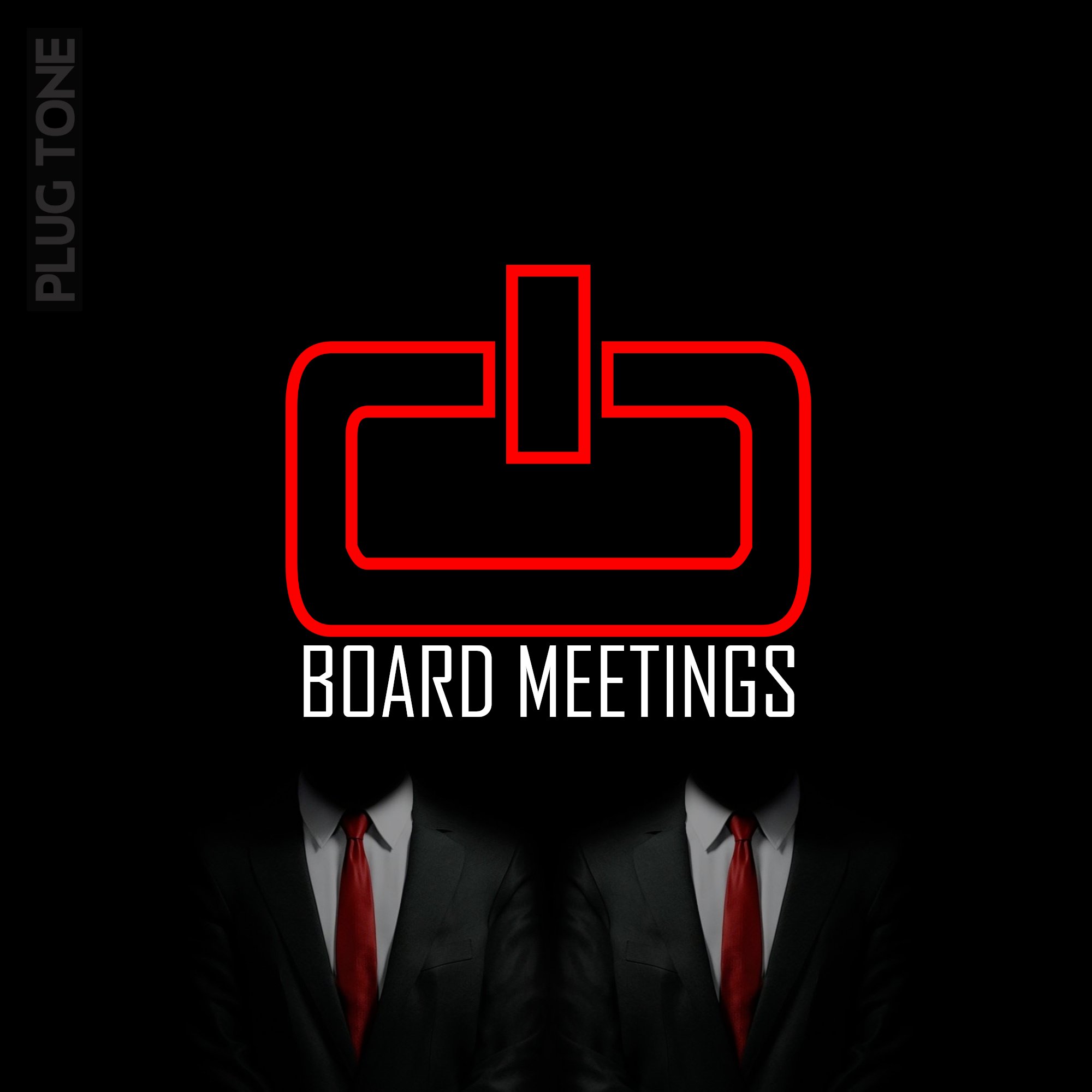






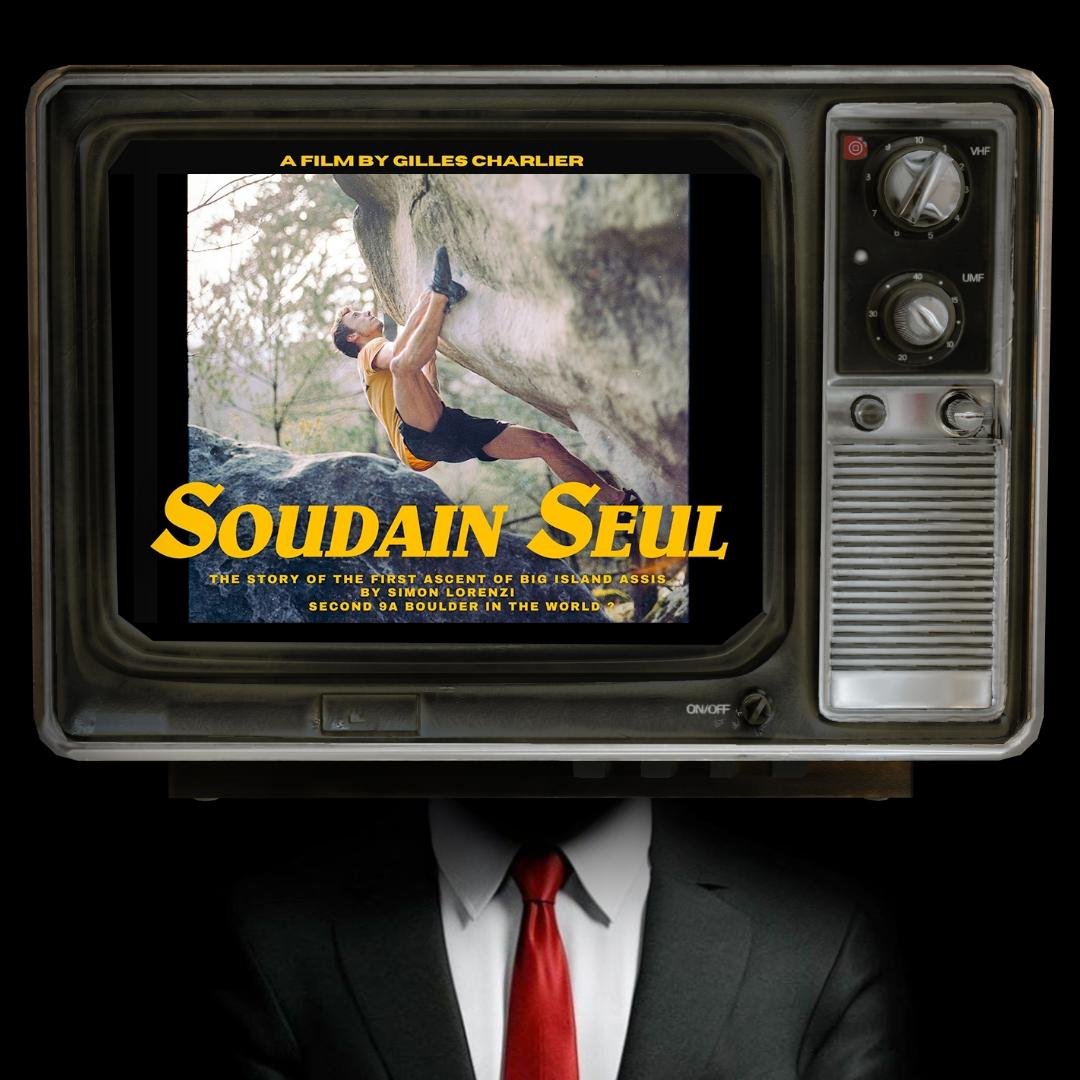
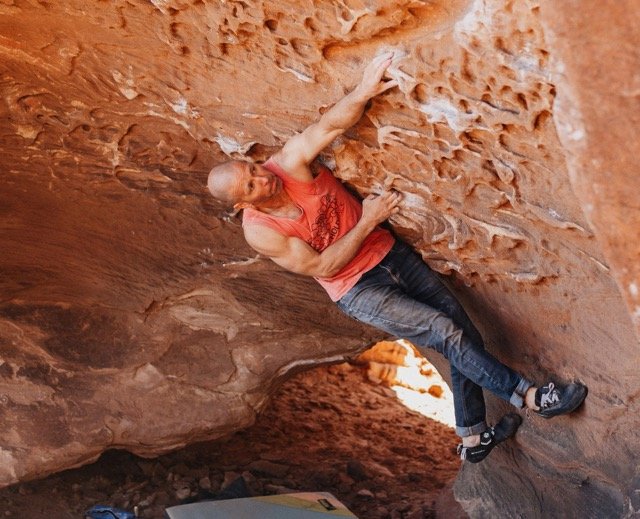



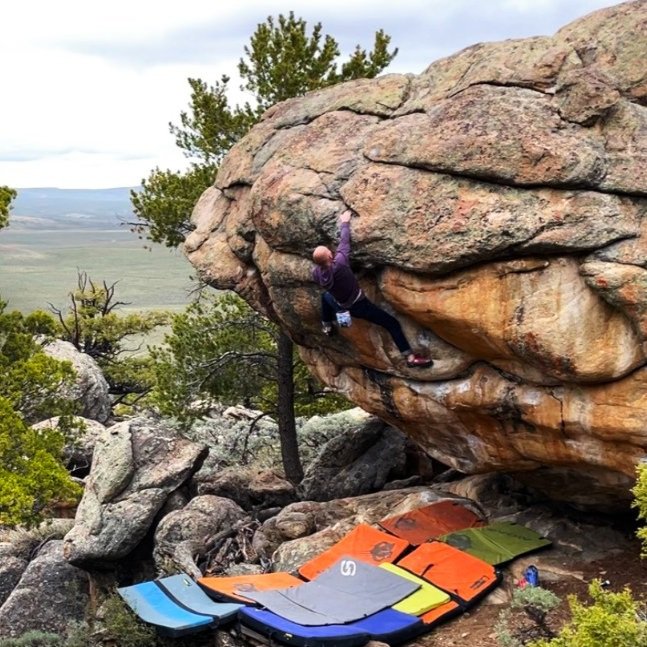











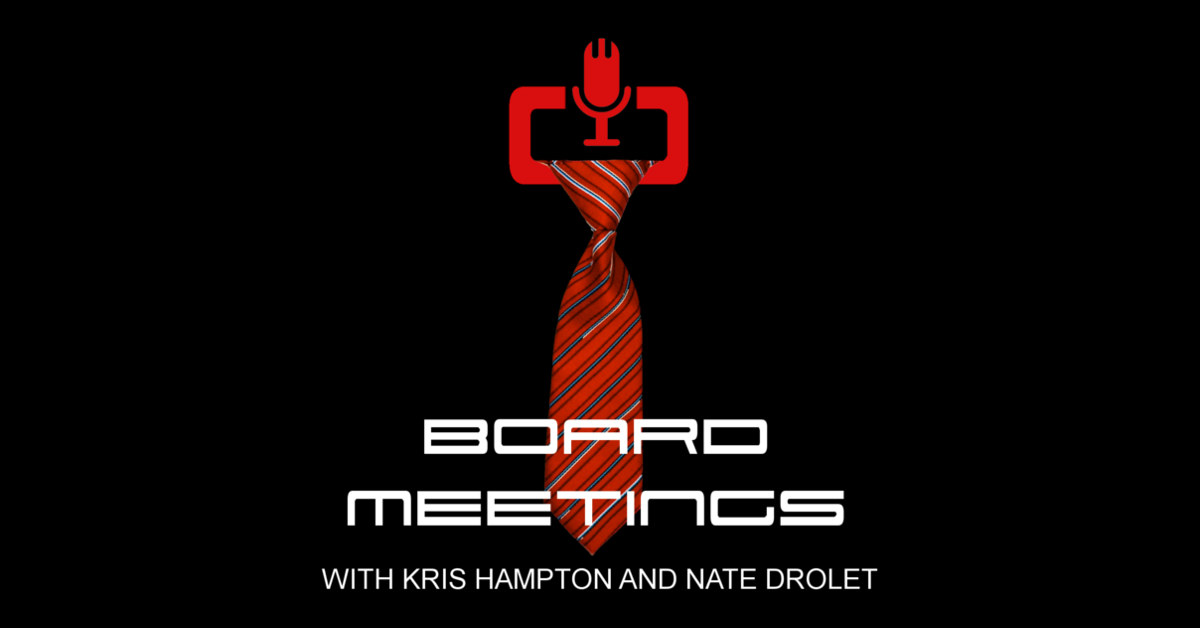









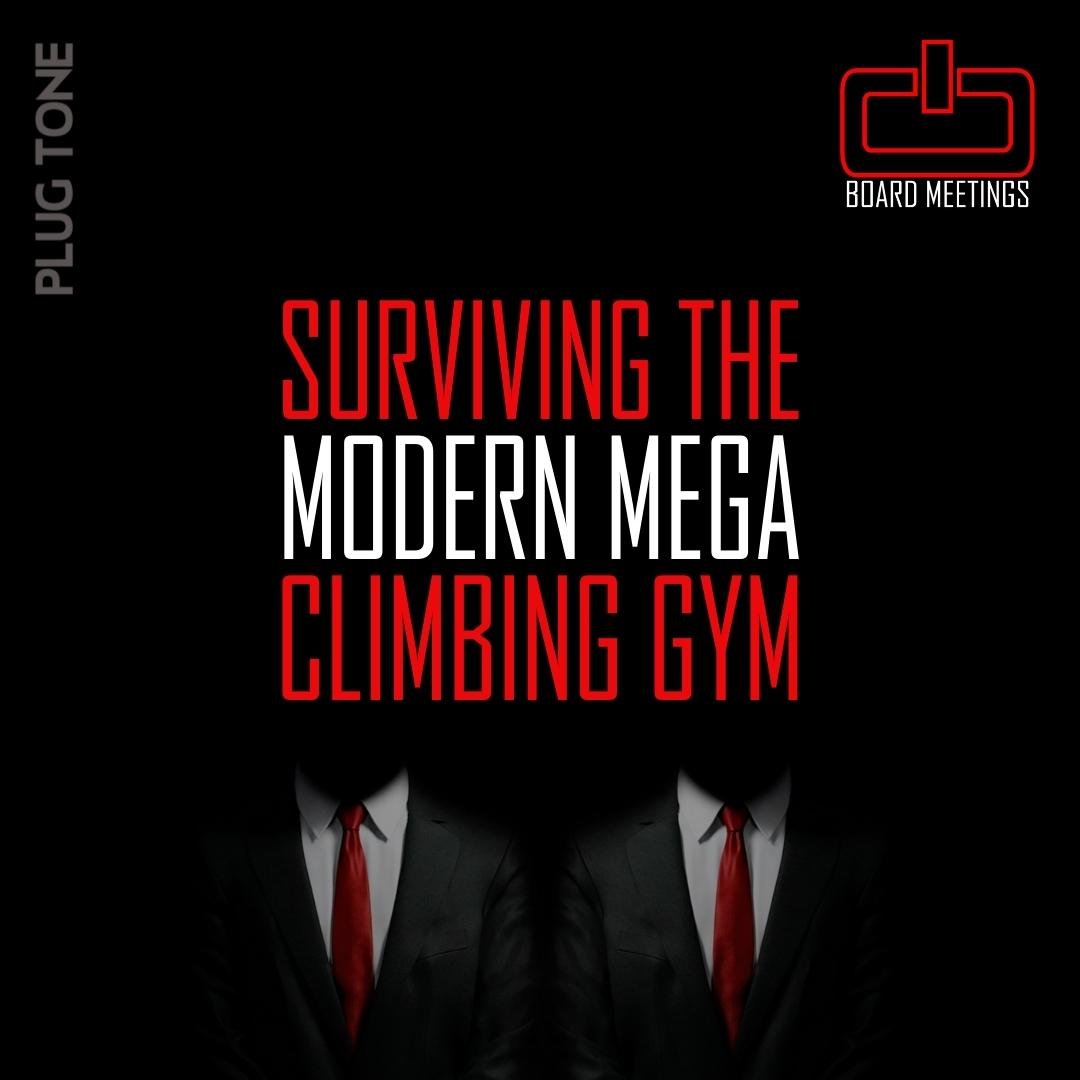

There is one single skill that trumps all others when it comes to being able to climb 5.13… do you have it?